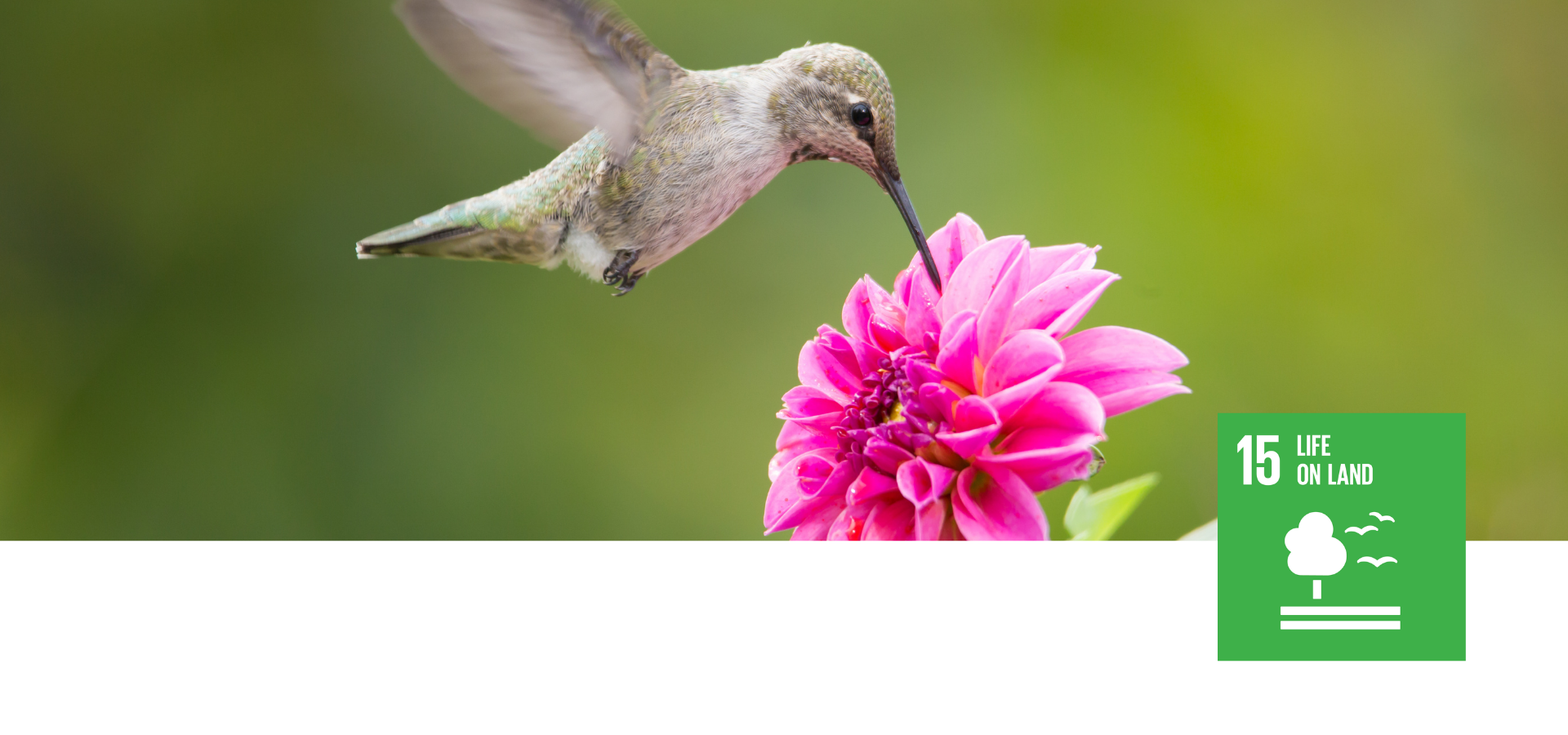
SDG 15: Life on land
In our unwavering commitment to preserving endangered life on land, HKUST has implemented a series of innovative and impactful initiatives to combat environmental threats and restore ecological balance. Through extensive research, sustainable practices on campus and community-driven projects, we are promoting a thriving ecosystem that encourages human activity with nature. Our efforts extend beyond campus boundaries, as we actively engage with the public in our community outreaches to raise awareness and to ensure a collective approach to environmental stewardship.
Curriculum
71 related courses were offered in the 2023-24 academic year.
Research
According to Science Direct, from 2020 to 2024, HKUST published 85 research papers addressing SDG 15.
21.18% of them are in the top 10% cite score and 77.6% are internationally co-authored.
Research Highlights
HKUST Researchers Develop AI-enabled Model to Help Mitigate Global Ammonia Emissions from Cropland by 38%.
Research team led by Prof. Jimmy FUNG Chi-Hung, Chair Professor of HKUST’s Division of Environment and Sustainability in the Academy of Interdisciplinary Studies and Department of Mathematics, and Prof. ZHENG Yi from the School of Environmental Science and Engineering at the Southern University of Science and Technology (SUSTech), has developed an innovative AI-powered model to address global ammonia (NH3) emissions around the world. The team trained an AI-powered computer model to estimate global NH3 emissions while incorporating critical geographical and environmental factors. This cutting-edge tool not only identifies emission hotspots but also generates customized fertilizer management plans for different regions that will ultimately reduce NH3 emissions due to the influence of global warming. This innovation promotes sustainable agriculture while protecting biodiversity and soil health.
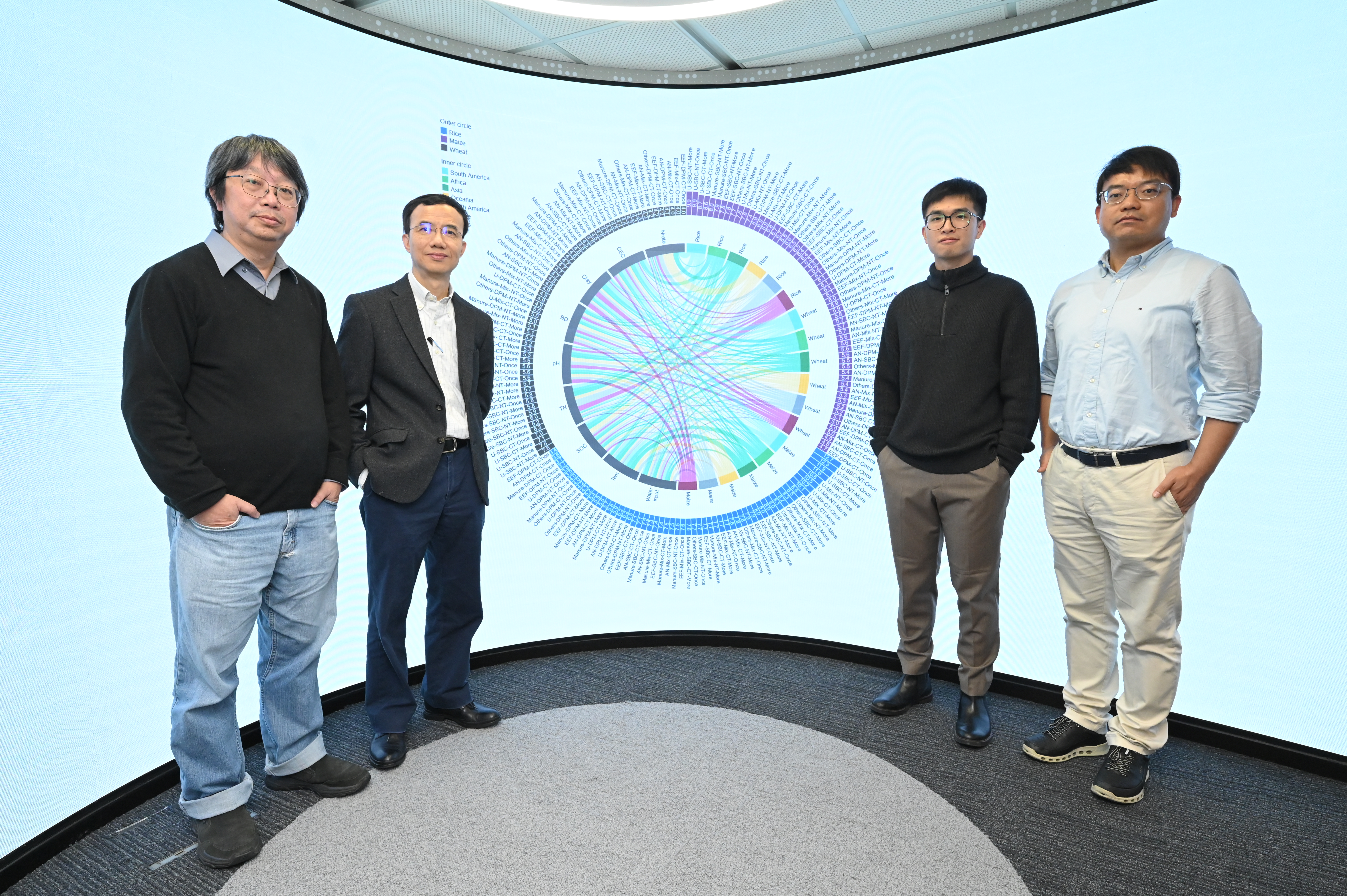
Butterfly garden: You Will See a Birdwing
In a dedicated effort to enhance and cultivate campus biodiversity, HKUST launched a Butterfly Garden initiative. Due to the difficulty of the university’s location, having limited native plant species to attract butterflies, this project was designed to create a healthy habitat for these vital pollinators while enriching the enjoyment of nature for our members. This garden is equipped with sustainable practices to decrease carbon footprints, including composting of yard wastes, utilizing rainwater for irrigation, and powering automatic lights with wind turbines and solar panels.
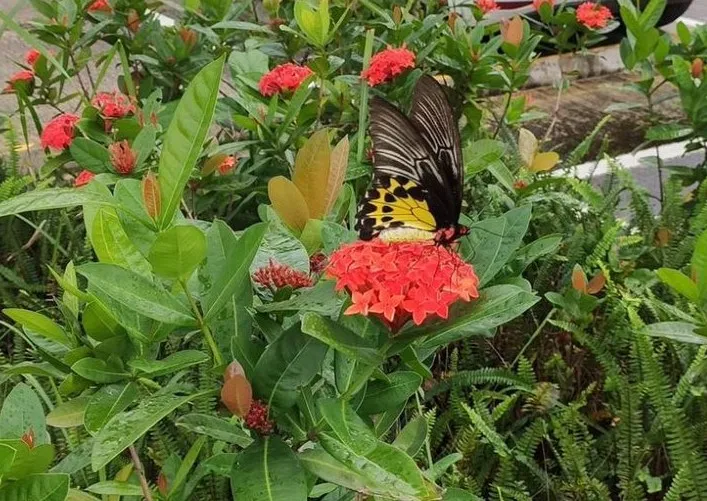
HKUST Researchers Throw New Light on Carboxysomes in Key Discovery that could Boost Photosynthesis
The team led by Prof. ZENG Qinglu, Associated Professor at HKUST’s Department of Ocean Science showed the overall architecture of carboxysomes, key protein compartments in bacteria that enable efficient carbon fixation, purified from a type of bacteria called Prochlorococcus, a vital marine bacterium. In collaboration with Prof. ZHOU Cong-Zhao of the School of Life Sciences in the University of Science & Technology of China, the team overcame one of the biggest technical difficulties in cell breakage and contamination, which would prevent the proper purification of carboxysomes. This discovery advances our ability to enhance natural carbon fixation processes with applications in biodiversity conservation, sustainable land use, and climate resilience.
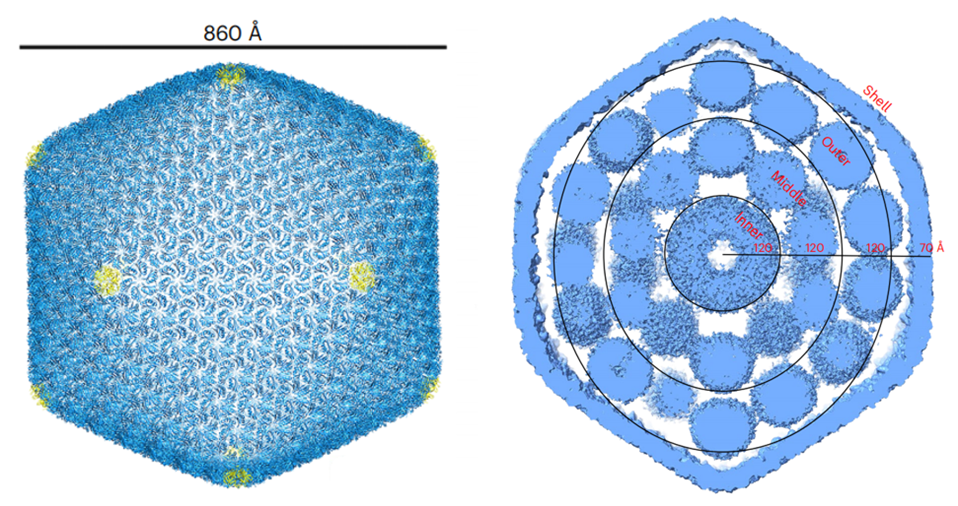
With the support of the HKUST Biological Cryo-EM Center, the team utilized the single-particle cryo-electron microscopy to determine the structure of the intact shell and characterize the overall architecture of the four-layered assembly pattern of Prochlorococcus α-carboxysome.
Policy
Sustainable Landscaping Policy
HKUST is committed to the conservation of our biodiversity and ecosystem resilience through sustainable landscaping practices. Our Sustainable Landscaping Policy requires contractors to adhere strict guidelines, including soil enrichment, conservation of water resource, and native species management, to minimize environmental impacts while also promoting ecological health.
Tree Felling & Planting Policy
In the effort to protect and preserve the vibrant trees of HKUST, the Tree Felling & Planting Policy was established to ensure a high-standard management of the university’s treasured woodland ecosystem. The university requires its faculty to have a Tree Preservation and Removal Proposal (TPRP) submitted to the Lands Department (LandsD) for thorough checking of their methods before they give any approval. Furthermore, third party contractors must emphasize their methods of any convention to protect plant species that are classified as Critically Endangered (CR).
Collaboration
Sustainable Smart Campus X Civic Exchange Sustainability Tour
HKUST's collaboration with Civic Exchange, welcoming a group of local high school students to campus to share sustainability initiatives. Energy-efficient projects were presented, including the application of passive radiative cooling technology to enhance solar PV efficiency and a green parking system powered by Edge cameras for EV drivers and carpoolers.
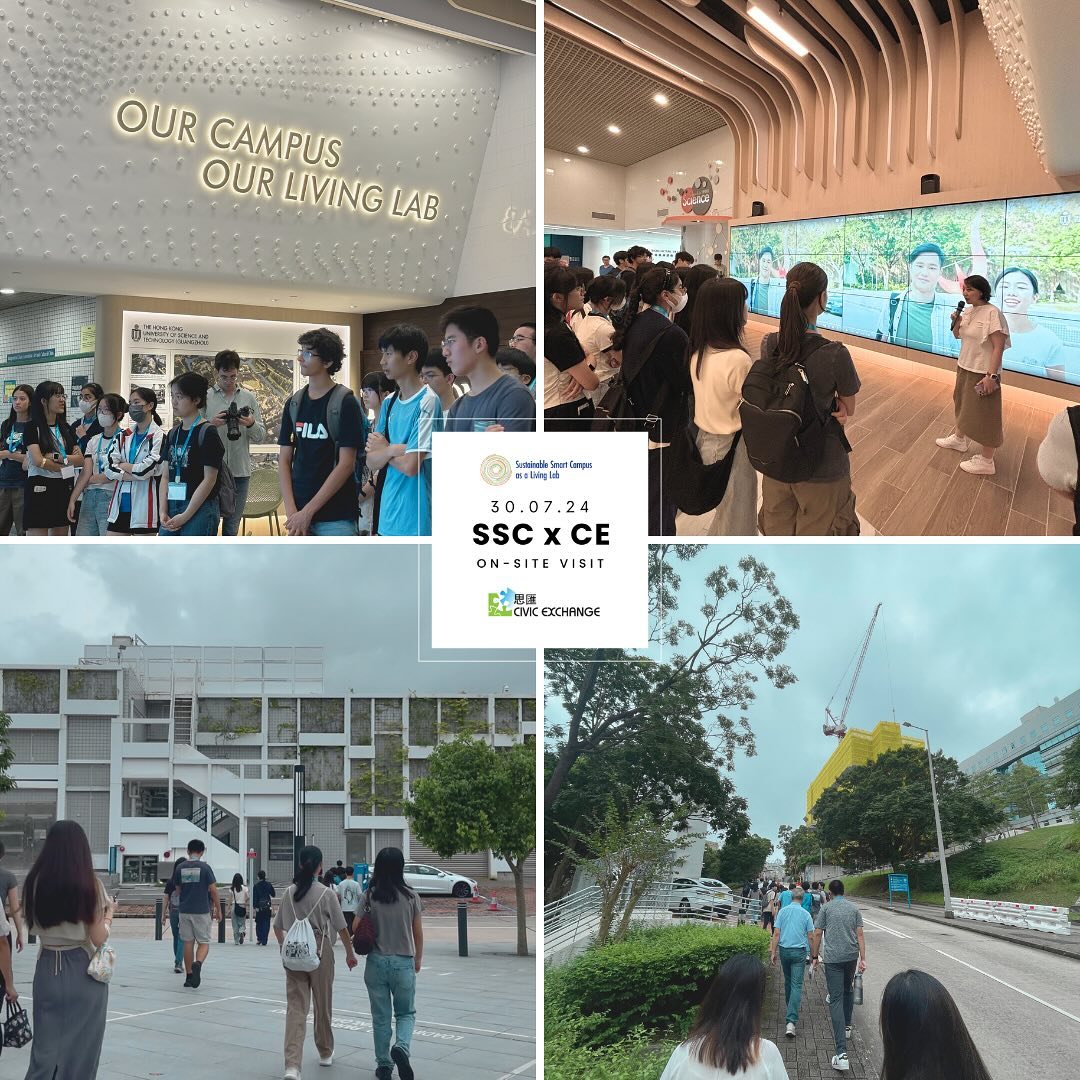
Community Engagement
Cat Shelter “Purr-fecting” Action
In collaboration with Hong Kong Saving Cat and Dog Association (HKSCDA), HKUST arranged Cat Shelter “Purr-fecting” Action to offer care and attention to the rescued animals at the facility. This gave participants first-hand insight into the crucial work carried out by the NGO to care for the stray cats.
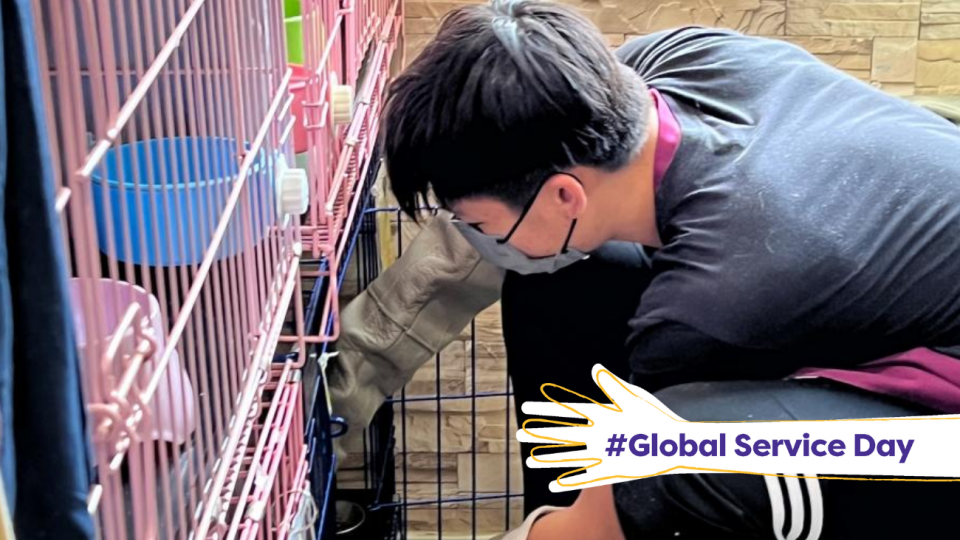
Volunteering @Fung Yuen Butterfly Reserve
In collaboration with the Environmental Association, HKUST organized Volunteering @Fung Yuen Butterfly Reserve where volunteers can participate in maintaining the butterfly habitat. This program aimed to offer our members an invaluable opportunity to gain a deeper understanding of importance and conservation efforts undertaken by the Fung Yuen Butterfly Reserve.
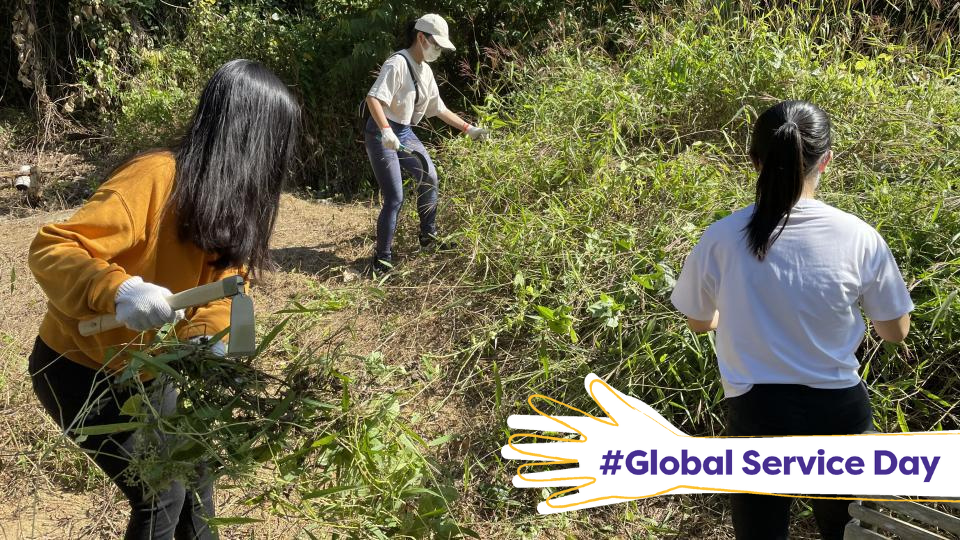
From Landfill to Life: HKUST’s Tree Transplanting Activity
In the effort to conserve plant life, HKUST dedicated an initiative to organize a sapling rescue event. Recognizing the ecological value of these native saplings that are at risk of being discarded in a nearby landfill, the goal of this event was to rescue 40 native saplings to help preserve local biodiversity. The event welcomed participants from all kinds of backgrounds, nurturing inclusivity and a stronger sense of community. This rescue event saved an abundance of plant life while also highlighting the urgency for the community to be active in the role of protecting the ecosystem.
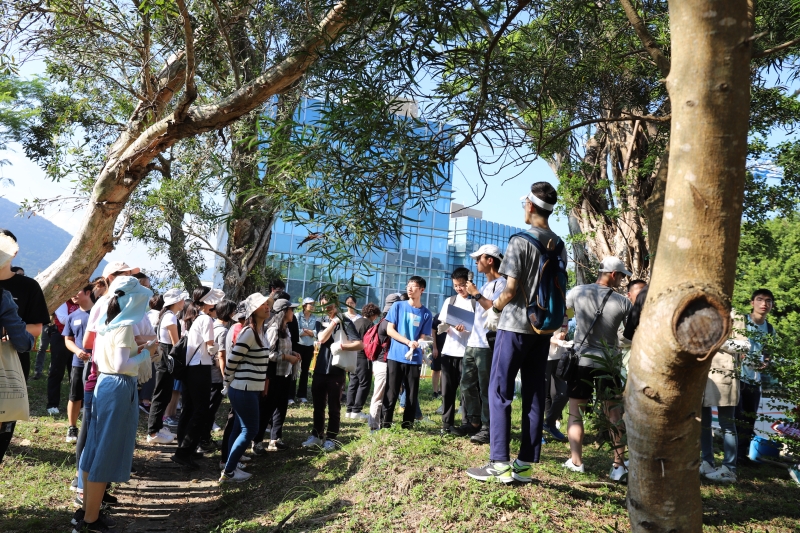
HKUSTours Invite Public to Explore Scenic Campus and Surrounding Neighborhood
Led by passionate guides from diverse backgrounds, including staff, faculty, and alumni, these tours unveil hidden gems on campus and in the Hang Hau community. Participants explore scenic hillside and waterfront complex overlooking the Clear Water Bay peninsula and learn to appreciate the natures and importance of preserving the environmental and biodiversity resources around us.
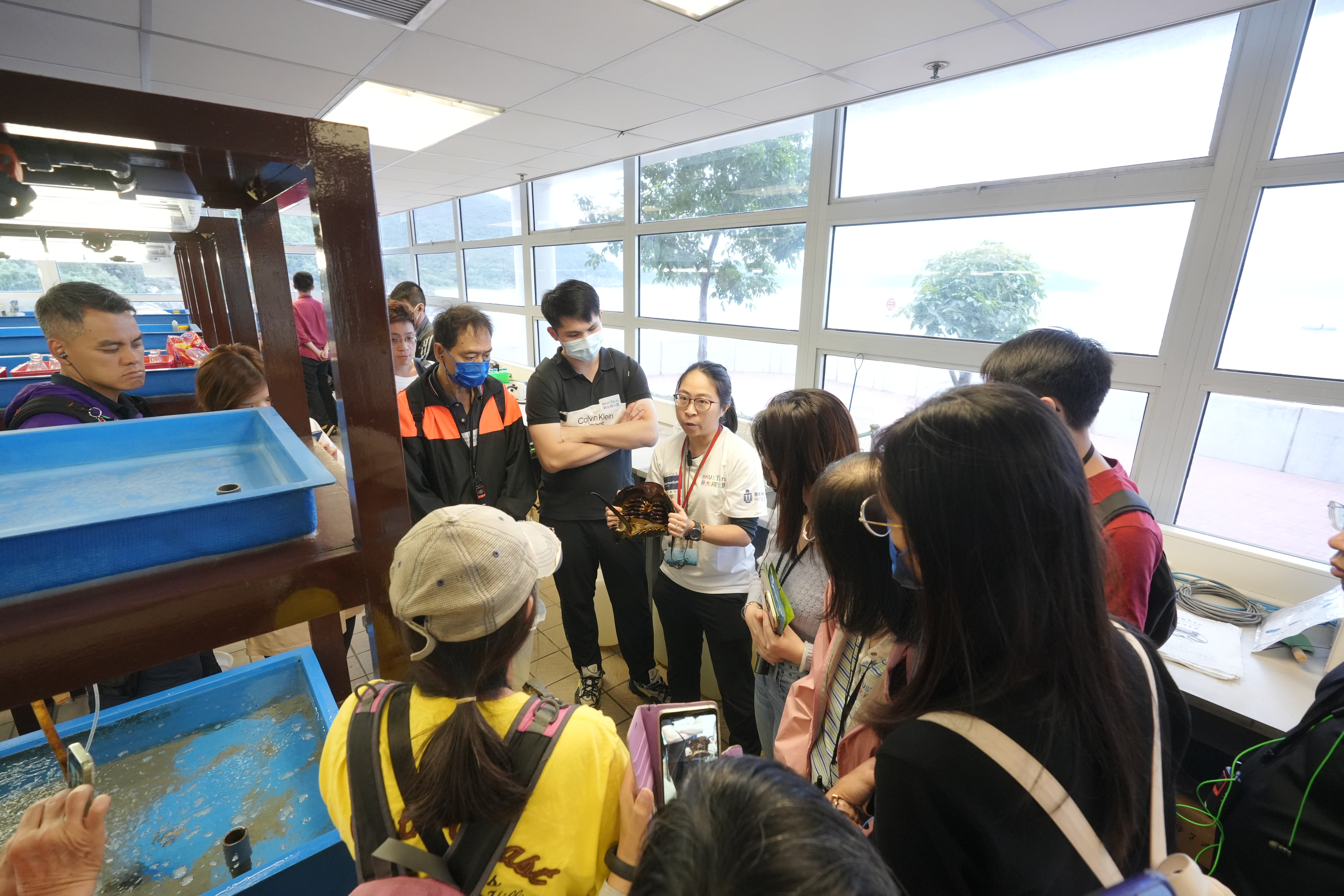
Alumni Sapling Planting Volunteering
With the intention of sowing the seeds of biodiversity conservation and in a display of reunion, the University organized a tree planting event along with HKUST Alumni.
The 20 Alumni planted 25 saplings of 5 different native species in the Upper BBQ Site Garden. One of the species, Cyclobalanopsis hui, had only 20 known mature individuals in only one location in Hong Kong back in 2018; another species, Endospermum chinense, with fewer than 1,000 individuals back in 2021 thought to be persistent in Hong Kong and carried historical significance related to indigenous knowledge, was also planted in the garden.
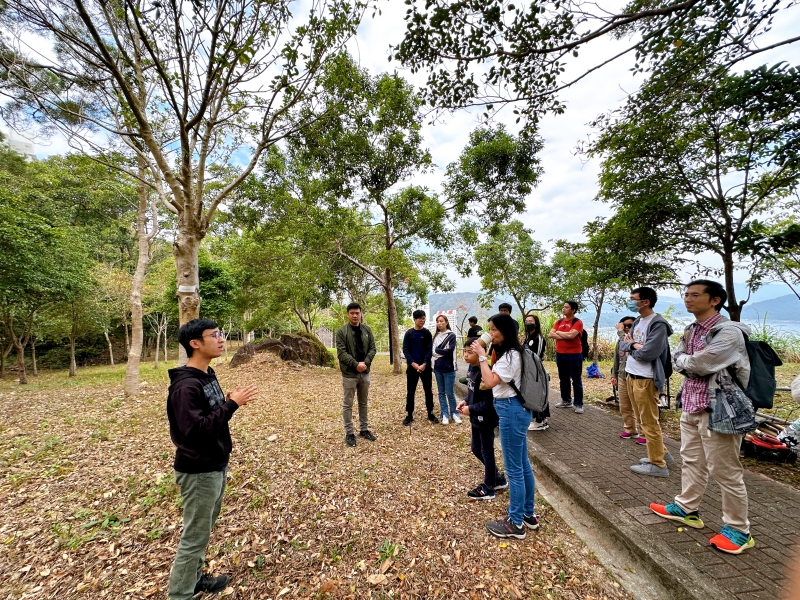
Operation Projects
Roadside Tree Carbon Storage
In 2024, HKUST surveyed 2,360 trees to assess the risk posed to pedestrians. During this assessment, biodiversity data was also collected.
Out of the 113 species surveyed, approximately 20% are native to Hong Kong. Native species hold significant ecological value and contribute to the city’s biodiversity by providing habitat and food for campus fauna, especially pollinators.
These trees, regardless of their native status, offer various ecosystem services, including air quality improvement, soil erosion prevention, stormwater absorption and filtration, and overall well-being for the campus community. Thus, they are essential natural resources for HKUST.
Utilizing data from the Roadside Tree Survey, the University has employed tools from the U.S. Forest Service Research and Development to estimate the carbon storage capacity of the campus trees. Currently, analysis indicates that the 2,360 trees on campus are collectively storing 524 tonnes of carbon.
Onsite Organic Waste Upcycled into Soil Conditioner
As part of the HKUST Sustainability Challenge 2028, a focus was placed on healthy soil for the campus landscape. To advance this goal, the University has applied 5,400 kg of off-campus waste woodchips from Y-Park and 815 kg of on-campus waste shredded leaves in 2023-24, which provide organic matter that enhances the fertility and structure of the soil.
This practice not only improves soil content but also helps retain moisture, thereby reducing water consumption for irrigation. Additionally, it prevents soil erosion, suppresses weed growth, and regulates soil temperature. By providing habitat for beneficial microorganisms and insects, it promotes a healthy ecosystem.
Ecological Enhancement Programme in Staff Quarters Landscaped Slopes
In resemblance to the woodlands of Hong Kong, certain areas of the University’s greenery are dominated by exotic species that serve as pioneer trees, capable of thriving in poor soil and effectively preventing soil erosion. However, as these trees age, they pose risks to the campus community and hinder the growth of native species.
To enhance the ecological value of the campus woodlands and address the increasing risk of fallen trees, the University has launched the Woodland Thinning and Ecological Enhancement Programme.
As part of this initiative, trees comprising both exotic species and native species in substandard health—were removed from the Senior Staff Quarters (SSQ) slope, and 252 tree seedlings of native species were planted to enrich the area.
During the tree-felling process, several trees with high-quality wood were carefully harvested and processed into planks for upcycling into furniture, art installations, or souvenirs, demonstrating the University’s commitment to preserving natural resources.
Research Building 2 Sapling Transplanting
In a display of environmental stewardship, the University has taken a proactive measure to conserve the ecological value of the woodland which is to be cleared for the Research Building 2 project.
Going beyond the requirements by regulations, HKUST identified 128 saplings of 17 different native species and put together an effort to rescue them.
The effort marked a significant milestone in promoting sustainability and conservation efforts within the university community, for it not only engaged the professional landscapers, but also around 70 voluntary HKUST community members, demonstrating the community’s dedication to biodiversity conservation.
The 128 saplings were eventually transplanted to different locations on the campus, enhancing the biodiversity of the ecosystems on campus.
Chemical Fertilizer Total Elimination
To further enhance soil quality in the campus landscape, HKUST explored natural soil amendment agents following the elimination of chemical fertilizers last year.
This year, the University has experimented with compost tea, which utilizes horse manure as a raw material, and Black Soldier Fly (BSF) Fertilizer, derived from chicken manure, both sourced from organic waste materials. These amendments provide comprehensive nutrients to the soil, promoting the growth of beneficial microorganisms.
The results of the experiment indicate that BSF Fertilizer demonstrated the best performance. Consequently, BSF fertilizer has been integrated into campus operations, with 500 kg of fertilizer applied to the landscape, enriching the soil with natural and comprehensive nutrients.